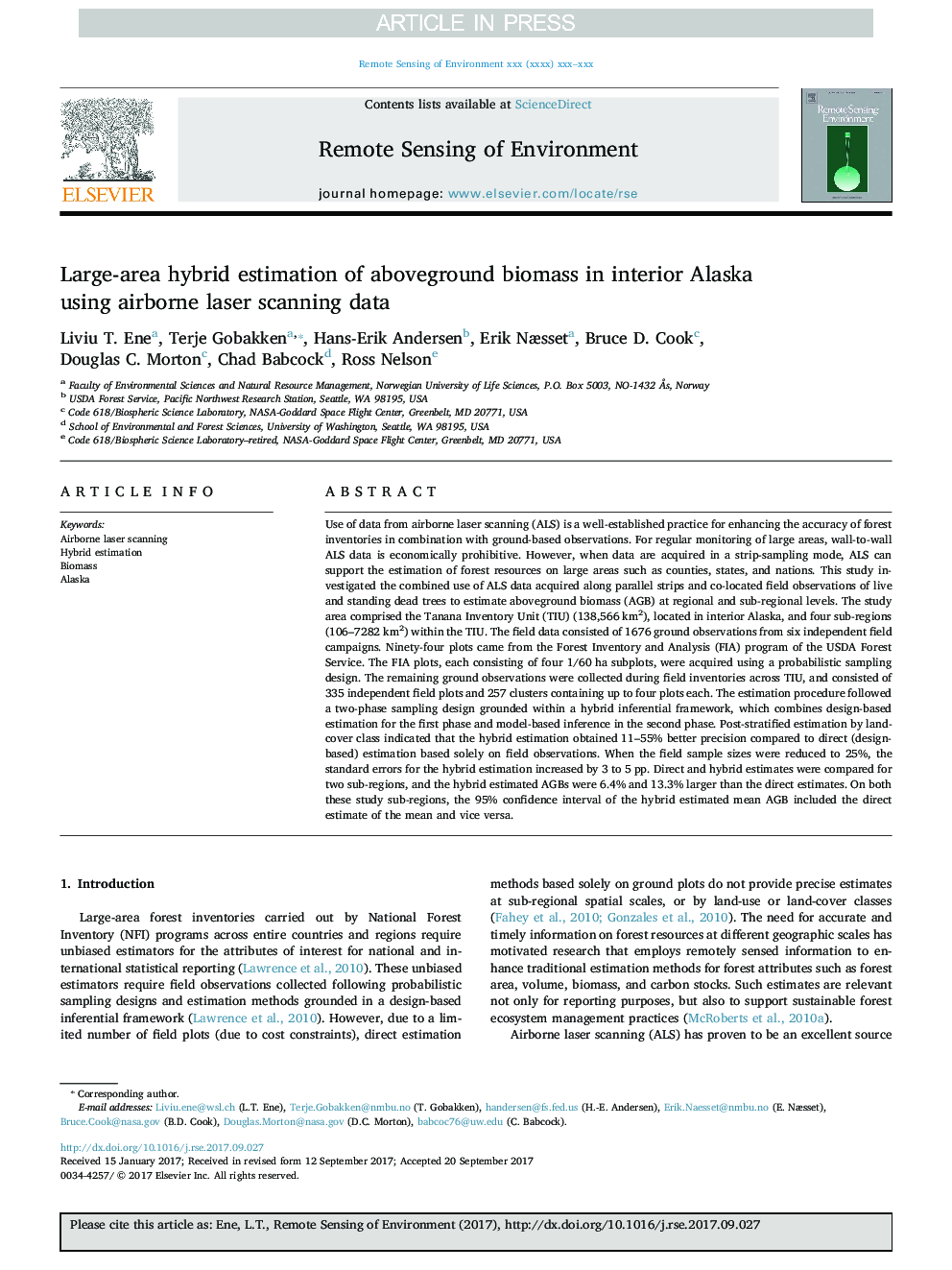| کد مقاله | کد نشریه | سال انتشار | مقاله انگلیسی | نسخه تمام متن |
|---|---|---|---|---|
| 8866895 | 1621196 | 2018 | 15 صفحه PDF | دانلود رایگان |
عنوان انگلیسی مقاله ISI
Large-area hybrid estimation of aboveground biomass in interior Alaska using airborne laser scanning data
ترجمه فارسی عنوان
برآورد هیبرید بزرگ منطقه ای از زیست توده زمین در داخل آلاسکا با استفاده از داده های اسکن لیزر هوایی
دانلود مقاله + سفارش ترجمه
دانلود مقاله ISI انگلیسی
رایگان برای ایرانیان
کلمات کلیدی
اسکنر لیزری هواپیما، برآورد ترکیبی، زیست توده، آلاسکا،
موضوعات مرتبط
مهندسی و علوم پایه
علوم زمین و سیارات
کامپیوتر در علوم زمین
چکیده انگلیسی
Use of data from airborne laser scanning (ALS) is a well-established practice for enhancing the accuracy of forest inventories in combination with ground-based observations. For regular monitoring of large areas, wall-to-wall ALS data is economically prohibitive. However, when data are acquired in a strip-sampling mode, ALS can support the estimation of forest resources on large areas such as counties, states, and nations. This study investigated the combined use of ALS data acquired along parallel strips and co-located field observations of live and standing dead trees to estimate aboveground biomass (AGB) at regional and sub-regional levels. The study area comprised the Tanana Inventory Unit (TIU) (138,566Â km2), located in interior Alaska, and four sub-regions (106-7282Â km2) within the TIU. The field data consisted of 1676 ground observations from six independent field campaigns. Ninety-four plots came from the Forest Inventory and Analysis (FIA) program of the USDA Forest Service. The FIA plots, each consisting of four 1/60Â ha subplots, were acquired using a probabilistic sampling design. The remaining ground observations were collected during field inventories across TIU, and consisted of 335 independent field plots and 257 clusters containing up to four plots each. The estimation procedure followed a two-phase sampling design grounded within a hybrid inferential framework, which combines design-based estimation for the first phase and model-based inference in the second phase. Post-stratified estimation by land-cover class indicated that the hybrid estimation obtained 11-55% better precision compared to direct (design-based) estimation based solely on field observations. When the field sample sizes were reduced to 25%, the standard errors for the hybrid estimation increased by 3 to 5Â pp. Direct and hybrid estimates were compared for two sub-regions, and the hybrid estimated AGBs were 6.4% and 13.3% larger than the direct estimates. On both these study sub-regions, the 95% confidence interval of the hybrid estimated mean AGB included the direct estimate of the mean and vice versa.
ناشر
Database: Elsevier - ScienceDirect (ساینس دایرکت)
Journal: Remote Sensing of Environment - Volume 204, January 2018, Pages 741-755
Journal: Remote Sensing of Environment - Volume 204, January 2018, Pages 741-755
نویسندگان
Liviu T. Ene, Terje Gobakken, Hans-Erik Andersen, Erik Næsset, Bruce D. Cook, Douglas C. Morton, Chad Babcock, Ross Nelson,
